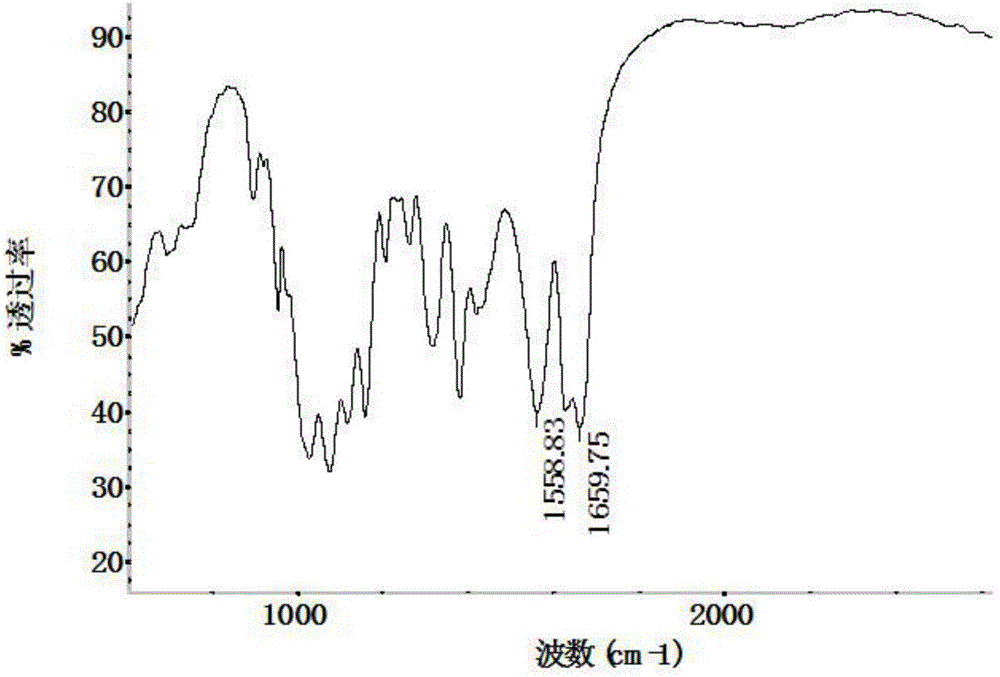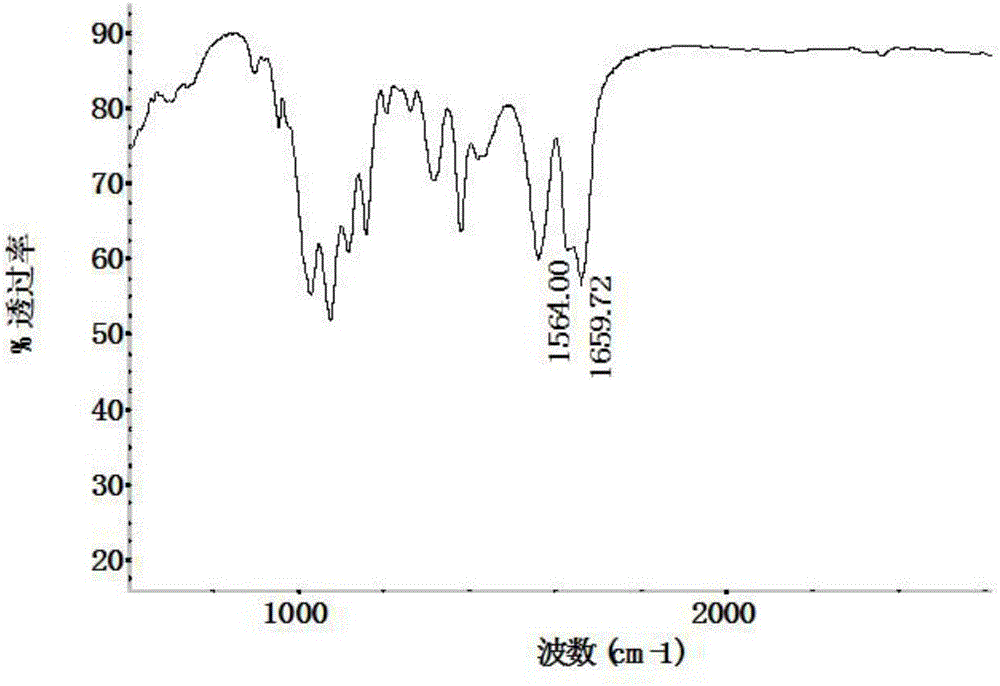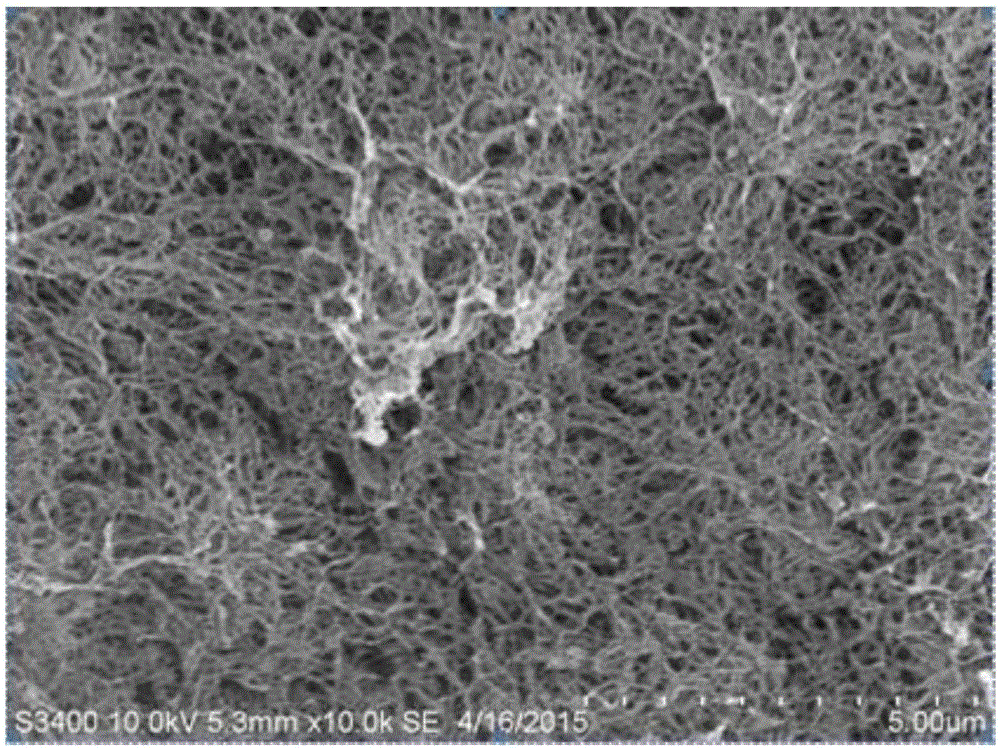Method for preparing chitin nanofibers from waste crayfish shells
A technology of nanofibers and chitin, which is applied to the chemical characteristics of fibers, textiles and papermaking, etc., can solve the problems of difficult large-scale production, difficult processing, high cost, etc., and achieve cost reduction, simple operation, and short time consumption Effect
- Summary
- Abstract
- Description
- Claims
- Application Information
AI Technical Summary
Problems solved by technology
Method used
Image
Examples
Embodiment 1
[0031] A method for preparing chitin nanofibers by using discarded crayfish shells, comprising the following steps:
[0032] Step 1, preparation of shrimp shell powder
[0033] Collect 1 kg of discarded crayfish shells from catering, wash, boil and dry, then crush (50 mesh), mix with absolute ethanol at a (w / v) ratio of 1:11, and filter with filter paper under ultrasonic assistance at 50°C for 20 hours , washed with water for 3 times, and dried to obtain depigmented shrimp shells. Add degreasing organic reagents to the decolorized shrimp shells according to (w / v) Example 1:11, degrease in a water bath at 60°C, filter through medium-speed filter paper, wash the filter residue with water, and dry in an oven at 70°C to obtain degreasing shrimp shell powder.
[0034] Step 2, preparation of deproteinized shrimp shell powder
[0035] After sterilizing the compound protease aqueous solution with a density of 5%, add the sterilized defatted shrimp shell powder, enzymolyze it in a wa...
Embodiment 2
[0043] A method for preparing chitin nanofibers by using discarded crayfish shells, comprising the following steps:
[0044] Step 1, preparation of shrimp shell powder
[0045] Collect 3 kg of discarded crayfish shells from catering, wash, boil and dry, then crush (50 mesh), mix with absolute ethanol at a (w / v) ratio of 1:15, and filter with filter paper under ultrasonic assistance at 40°C for 17 hours , washed with water for 3 times, and dried to obtain depigmented shrimp shells. Add degreasing organic reagents to the decolorized shrimp shells according to (w / v) Example 1:10, degrease in a water bath at 60°C, filter with medium-speed filter paper, wash the filter residue with water, and dry in an oven at 70°C to obtain degreasing shrimp shell powder.
[0046] Shrimp shell powder.
[0047] Step 2, preparation of deproteinized shrimp shell powder
[0048] After sterilizing the compound protease aqueous solution with a density of 5%, add the sterilized defatted shrimp shell p...
Embodiment 3
[0056] A method for preparing chitin nanofibers by using discarded crayfish shells, comprising the following steps:
[0057] Step 1, preparation of shrimp shell powder
[0058] Collect 5kg of discarded crayfish shells from catering, wash, boil and dry, then crush (50 mesh), mix with absolute ethanol at a (w / v) ratio of 1:14, and filter with filter paper under ultrasonic assistance at 40°C for 15 hours , washed twice with water, and dried to obtain depigmented shrimp shells. Add degreasing organic reagents to the decolorized shrimp shells according to (w / v) Example 1:13, degrease in a water bath at 60°C, filter with medium-speed filter paper, wash the filter residue with water, and dry in an oven at 70°C to obtain degreasing shrimp shell powder.
[0059] Step 2, preparation of deproteinized shrimp shell powder
[0060] After sterilizing the compound protease aqueous solution with a density of 5%, add the sterilized defatted shrimp shell powder, enzymolyze it in a water bath a...
PUM
| Property | Measurement | Unit |
|---|---|---|
| Diameter | aaaaa | aaaaa |
Abstract
Description
Claims
Application Information
 Login to View More
Login to View More - R&D
- Intellectual Property
- Life Sciences
- Materials
- Tech Scout
- Unparalleled Data Quality
- Higher Quality Content
- 60% Fewer Hallucinations
Browse by: Latest US Patents, China's latest patents, Technical Efficacy Thesaurus, Application Domain, Technology Topic, Popular Technical Reports.
© 2025 PatSnap. All rights reserved.Legal|Privacy policy|Modern Slavery Act Transparency Statement|Sitemap|About US| Contact US: help@patsnap.com



